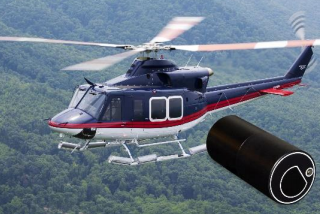Astronics Corporation announced that an amended Supplemental Type Certificate (STC) has been approved for the Max-Viz 2300 Enhanced Vision System (EVS). Offered by wholly owned subsidiary Astronics PECO and obtained in cooperation with AVIO dg in Calgary Canada, the STC covers multiple Bell helicopter models, including 212, 412 and Bell 412EPI aircraft.

With the U.S. Federal Aviation Administration (FAA) and Transport Canada Civil Aviation (TCCA) approvals, images produced by the Max-Viz 2300 can now be presented on MFDs (Multi Function Displays), PFDs (Primary Function Displays), or on standalone displays depending on aircraft configurations. The amendment upgrades the wiring package to include VIVISUN® Switches for more effective mission utilization with NVGs (Night Vision Goggles) in search & rescue, emergency medical services, aerial firefighting, and military applications.
“We are pleased that our technology is approved to provide enhanced vision for improved safety on the daily missions of these workhorse helicopters,” said Tom Geiger, Max-Viz Business Unit Director for Astronics PECO. “We have worked closely with AVIO dg, which will now be the new point of contact for this STC data package, fairings, and STC kit,” he added.
Astronics Max-Viz EVS provides pilots with an unprecedented level of situational awareness and safety by enabling them to see more precisely during day or night in adverse weather conditions, such as haze, smoke, smog and light fog, even on the darkest night. At night, pilots can also see and avoid clouds for a smoother ride. While landing, pilots using the Max-Viz EVS can identify the runway and view the terrain clearly to avoid wildlife and unlit obstructions. A recent ruling from the FAA permitting properly equipped aircraft to fly certain Instrument Flight Rule (IFR) approaches to landing, in lieu of natural vision, is expected to drive additional acceptance of EVS technology. Of the over 3,500 installed Astronics Max-Viz EVS systems, approximately 60 percent are on fixed-wing general aviation aircraft and 40 percent are operating on helicopters. With Supplemental and Type Certificates in both fixed wing and rotor wing aircraft, Astronics Max-Viz offers products built on more than 19 years of success in enhanced vision systems. View the EVS offerings in detail at www.astronics.com/max-viz.


